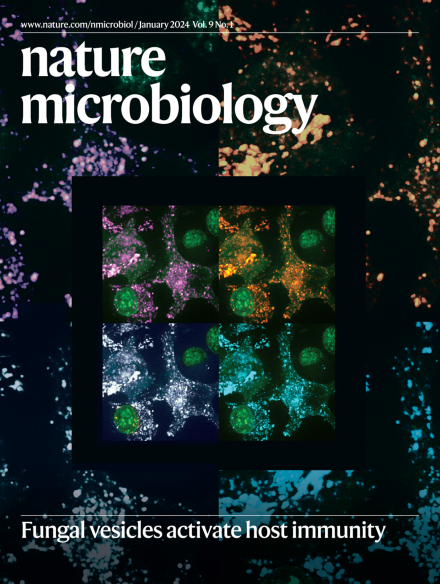Dynamic expression of candidalysin facilitates oral colonization of Candida albicans in mice
IF 19.4
1区 生物学
Q1 MICROBIOLOGY
引用次数: 0
Abstract
Candida albicans is a common fungal member of the human microbiota but can also cause infections via expression of virulence factors associated with the yeast-to-hyphae transition. The evolutionary selection pressure to retain these pathogenic traits for a commensal microorganism remains unclear. Here we show that filamentation and hyphae-associated factors, including the toxin candidalysin, are crucial for colonization of the oral cavity, a major reservoir of C. albicans. Low-virulent strains of C. albicans expressed the candidalysin-encoding gene ECE1 transiently upon exposure to keratinocytes in vitro. In mice, ECE1 mutants were defective at accessing terminally differentiated oral epithelial layers where the fungus is protected from IL-17-mediated immune defence. Tight regulation of ECE1 expression prevented detrimental effects of candidalysin on the host. Our results suggest that hyphae-associated factors such as candidalysin govern not only pathogenicity, but also mucosal colonization through direct host interactions enabling C. albicans to create and maintain its niche in the oral mucosa. Despite being a virulence factor, candidalysin toxin is essential for Candida albicans to penetrate the oral epithelium to establish and maintain non-infectious colonization

念珠菌素的动态表达促进了小鼠口腔白色念珠菌的定植。
白色念珠菌是人类微生物群中常见的真菌成员,但也可以通过与酵母到菌丝转化相关的毒力因子的表达引起感染。共生微生物保留这些致病特性的进化选择压力尚不清楚。在这里,我们表明丝和菌丝相关因素,包括毒素念珠菌素,是口腔定植的关键,口腔是白色念珠菌的主要储存库。低毒力的白色念珠菌在暴露于角质形成细胞后短暂表达念珠菌素编码基因ECE1。在小鼠中,ECE1突变体在进入终末分化的口腔上皮层时存在缺陷,在那里真菌受到il -17介导的免疫防御的保护。严格调控ECE1的表达可防止候选酵素对宿主的有害影响。我们的研究结果表明,菌丝相关因子(如candidalysin)不仅控制致病性,还通过直接宿主相互作用控制粘膜定植,使白色念珠菌在口腔黏膜中建立并维持其生态位。
本文章由计算机程序翻译,如有差异,请以英文原文为准。
求助全文
约1分钟内获得全文
求助全文
来源期刊

Nature Microbiology
Immunology and Microbiology-Microbiology
CiteScore
44.40
自引率
1.10%
发文量
226
期刊介绍:
Nature Microbiology aims to cover a comprehensive range of topics related to microorganisms. This includes:
Evolution: The journal is interested in exploring the evolutionary aspects of microorganisms. This may include research on their genetic diversity, adaptation, and speciation over time.
Physiology and cell biology: Nature Microbiology seeks to understand the functions and characteristics of microorganisms at the cellular and physiological levels. This may involve studying their metabolism, growth patterns, and cellular processes.
Interactions: The journal focuses on the interactions microorganisms have with each other, as well as their interactions with hosts or the environment. This encompasses investigations into microbial communities, symbiotic relationships, and microbial responses to different environments.
Societal significance: Nature Microbiology recognizes the societal impact of microorganisms and welcomes studies that explore their practical applications. This may include research on microbial diseases, biotechnology, or environmental remediation.
In summary, Nature Microbiology is interested in research related to the evolution, physiology and cell biology of microorganisms, their interactions, and their societal relevance.
 求助内容:
求助内容: 应助结果提醒方式:
应助结果提醒方式:


